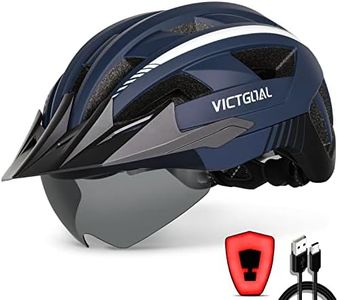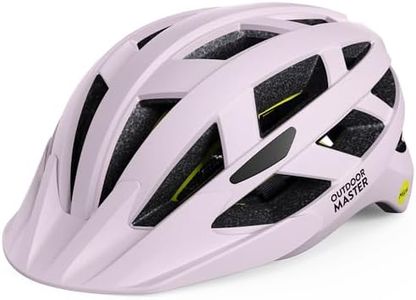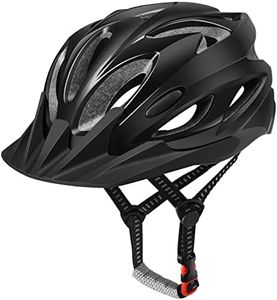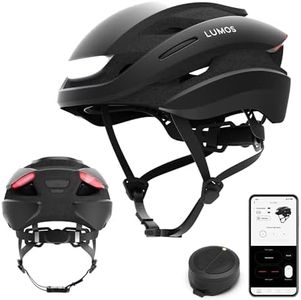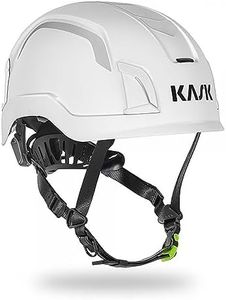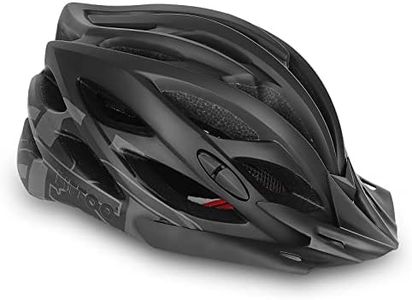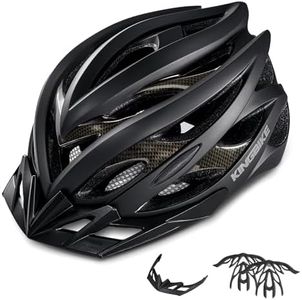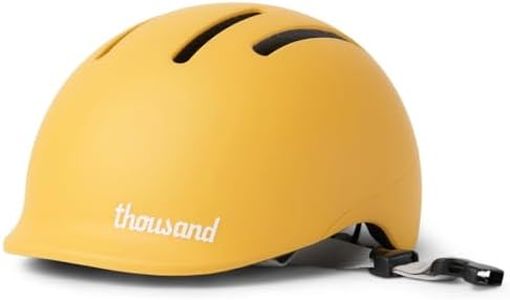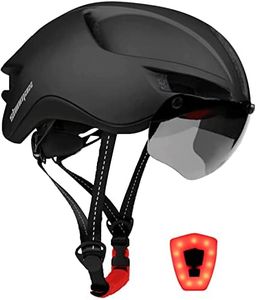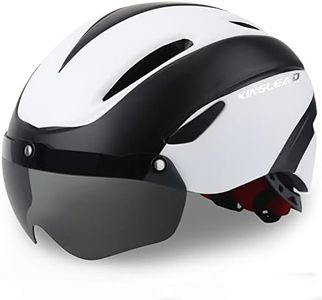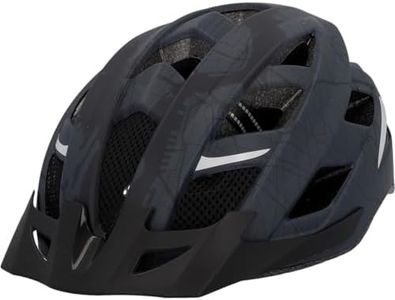We Use CookiesWe use cookies to enhance the security, performance,
functionality and for analytical and promotional activities. By continuing to browse this site you
are agreeing to our privacy policy
10 Best Bicycle Helmets
From leading brands and best sellers available on the web.Buying Guide for the Best Bicycle Helmets
Choosing a bicycle helmet is one of the most important steps you can take to ensure your safety while riding. The helmet not only protects your head in case of an accident but can also provide comfort and additional features that make your ride more enjoyable. To pick the best helmet for you, it's helpful to understand the key specifications, what they mean, and how your riding habits and preferences should guide your decision.Fit and SizeThe fit and size of a helmet refer to how well it sits on your head. A helmet that fits correctly will provide maximum protection and comfort. Sizing is usually measured by the circumference of your head, and it’s important because a helmet that's too loose may move during a crash, while one that's too tight can cause discomfort. Helmet sizes generally range from small to extra-large, and some come with adjustable retention systems for fine-tuning. To pick the right size, measure your head around the widest part and try on helmets; the helmet should be snug but not painfully tight. If you often wear a cap or have lots of hair, consider this when choosing size as well.
Safety CertificationsSafety certifications show that a helmet meets established safety standards for protection during impacts. These certifications, such as CPSC, EN 1078, or AS/NZS 2063, are important because they confirm the helmet has been tested for its ability to reduce head injuries. Helmets without certification may not provide adequate protection. Look for at least one recognized certification label inside the helmet and prioritize certified helmets, as they indicate trustworthy safety performance, especially if you ride in urban areas, on roads, or off-road trails.
VentilationVentilation means the helmet’s ability to allow air to flow over your head, helping to keep you cool while riding. More vents usually mean better airflow, which is especially beneficial on hot days or long rides. However, more vents can also mean less coverage or slightly less weight. For casual city or short rides, moderate ventilation is usually enough, whereas for long-distance or high-intensity riding, plenty of large, well-placed vents are preferred. Your choice should match your typical riding conditions and sensitivity to heat while cycling.
WeightThe weight of a helmet influences how comfortable it feels, especially on longer rides. Lighter helmets are easier to wear for extended periods and cause less neck fatigue, but ultra-light helmets may also cost more. Heavier helmets can still provide high levels of protection and are often chosen for commuting or short rides. Choose a lighter helmet if you're planning to ride long distances or participate in sports cycling, while a heavier helmet should be suitable for casual runs or city commuting.
Retention SystemA helmet’s retention system refers to the straps and adjustment mechanisms that keep the helmet snugly on your head. This system is important because a good fit means the helmet stays in place during a ride or in the event of a fall. Common systems include dial adjusters at the back, adjustable straps, and padded liners. When choosing, look for a helmet that's easy to adjust and feels secure when you shake your head. People who often ride on rough terrain or at higher speeds should prioritize a precise and reliable retention system.
MIPS or Additional Safety TechMIPS stands for Multi-directional Impact Protection System and is an extra safety feature designed to reduce rotational forces during a crash. Other brands may offer similar technologies. This is important because it can lower the risk of certain types of brain injuries. While not required, choosing a helmet with these technologies provides an added layer of protection, which is especially relevant for frequent riders or those in high-risk environments. If you value maximum safety, look for helmets with MIPS or similar features.
Visibility FeaturesVisibility features include built-in reflective materials, bright colors, or even integrated lights. These increase your chances of being seen by drivers and others, which reduces the risk of accidents. If you often ride at dawn, dusk, night, or in busy traffic, a helmet with high-visibility elements is a wise choice. For daytime or trail riding in clear environments, standard colors may suffice unless enhanced visibility is a personal preference.
Removable Padding and LinerRemovable padding and liners refer to the soft inner materials that can be taken out for cleaning or replaced. These add comfort and can adjust the fit slightly. They are important from a hygiene perspective because sweat and dirt can quickly build up inside a helmet. If you ride often, especially in hot conditions, picking a helmet with washable, replaceable pads will help you maintain comfort and cleanliness over time.
